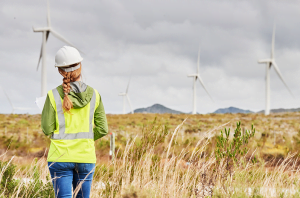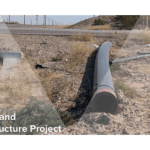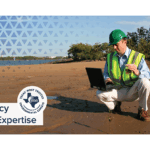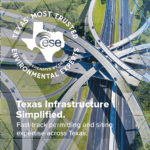
In the field of environmental consulting, one critical aspect of property due diligence is conducting a Phase 2 Environmental Site Assessment (ESA). This thorough investigation enables stakeholders to gain a comprehensive understanding of any potential environmental risks associated with a particular site. In the case of Leander, Texas, a Phase 2 ESA is of utmost importance given the rapid growth and development in the area. This article delves into the purpose, process, and implications of a Phase 2 ESA in Leander, shedding light on the regulatory framework and potential environmental concerns that need to be addressed.
Understanding the Purpose of Phase 2 Environmental Site Assessment
Phase 2 ESA serves as a critical tool in assessing the environmental quality of a property and identifying any contamination issues that may exist. While Phase 1 ESA focuses on identifying potential areas of concern, Phase 2 goes a step further by conducting detailed investigations to confirm the presence or absence of potential contaminants. It provides valuable data to evaluate the risks associated with a site, guiding property owners, developers, and other stakeholders in making informed decisions regarding property transactions or development plans.
The Importance of Phase 2 Environmental Site Assessment
Without a Phase 2 ESA, potential environmental issues may remain undetected, posing significant financial, legal, and health risks. By prioritizing Phase 2 assessments, Leander demonstrates a commitment to sustainable development and ensures the protection of its residents and the environment. Additionally, the Phase 2 ESA supports compliance with regulatory requirements, assisting property owners in gaining necessary approvals or permits for their projects.
Key Components of Phase 2 Environmental Site Assessment
A Phase 2 ESA typically involves a multi-step process, encompassing various activities to gather data and evaluate environmental risks. The following components form the foundation of a comprehensive Phase 2 ESA:
- Initial Site Inspection and Data Collection: Trained professionals conduct a thorough visual inspection of the property, assessing potential areas of concern. This includes evaluating historical records, aerial imagery, and onsite observations to identify potential sources of contamination or hazardous materials.
- Laboratory Testing and Analysis: Samples of soil, groundwater, air, and other media are collected from specific locations within the site. These samples are then analyzed in accredited laboratories to determine the presence, concentrations, and distribution of contaminants or pollutants, if any.
- Evaluation of Findings and Report Preparation: Once the laboratory analysis is complete, the data is assessed in conjunction with the site’s history and current conditions to determine the extent of contamination, potential risks, and applicable regulatory standards. A comprehensive report is prepared to summarize the findings, recommendations, and potential remediation strategies.
The Process of Conducting a Phase 2 Environmental Site Assessment in Leander
Initial Site Inspection and Data Collection
The Phase 2 ESA process in Leander typically commences with a thorough site inspection conducted by experienced environmental consultants. During this stage, consultants meticulously examine the property, documenting any potential sources of contamination or hazardous materials. They thoroughly review historical records, maps, and aerial imagery to gain insight into previous land uses and potential risks. This initial inspection forms the foundation for further investigations and data collection.
Laboratory Testing and Analysis
After the initial site inspection, environmental samples are collected from specific locations within the property. These samples may include soil, groundwater, surface water, sediment, or air. The samples are then sent to accredited laboratories for detailed analysis. Compatibility with Leander’s local environmental policies and regulations is ensured during the sample collection and laboratory testing process, to provide accurate and relevant results.
Evaluation of Findings and Report Preparation
Once the laboratory analysis is complete, the data collected is meticulously evaluated by environmental experts. This evaluation includes comparing the contamination levels with regulatory standards and guidelines, identifying potential risks to human health and the environment. The findings are then consolidated into a detailed report, providing a comprehensive overview of the environmental condition of the site. This report includes recommendations for any necessary remediation measures and potential strategies to mitigate the identified risks.
Potential Environmental Concerns in Leander
Soil Contamination Issues
Leander’s rapid growth and urban development activities have the potential to introduce contaminants into the soil. Industrial activities, agricultural practices, and waste disposal sites can all contribute to soil pollution. A Phase 2 ESA in Leander identifies any soil contamination issues, enabling property owners and developers to implement appropriate remediation strategies that align with local environmental regulations.
Groundwater Quality Concerns
With abundant underground water resources, protecting the quality of groundwater is paramount. Phase 2 ESA addresses potential groundwater contamination concerns by testing for the presence of hazardous substances or pollutants. By proactively addressing groundwater quality issues, Leander ensures the preservation of this valuable natural resource and safeguards public health.
Hazardous Material Presence
As with any developed area, Leander faces the potential presence of hazardous materials within its properties. These materials may include asbestos, lead-based paint, mold, or other toxic substances. A Phase 2 ESA helps identify the presence of hazardous materials, allowing for their proper removal or mitigation before any further actions are taken.
Regulatory Framework for Environmental Site Assessments
Federal and State Environmental Regulations
Environmental site assessments, including Phase 2 ESAs, are governed by various federal and state regulations in the United States. The Environmental Protection Agency (EPA) establishes guidelines and standards for environmental assessments, ensuring consistency and accountability in the process. Additionally, the Texas Commission on Environmental Quality (TCEQ) sets specific requirements for environmental investigations within the state, including Leander.
Compliance with Leander’s Local Environmental Policies
Leander, being committed to sustainable development, has established its own local environmental policies. These policies aim to protect natural resources, prevent contamination, and ensure responsible development practices. Compliance with these policies is an essential aspect of conducting a Phase 2 ESA in Leander, promoting environmental stewardship and sustainable growth.
Impact of Phase 2 Environmental Site Assessment Findings
Implications for Property Development
The findings of a Phase 2 ESA can have profound implications for property development plans. If the assessment confirms the presence of contamination or hazardous materials, remediation efforts may be necessary before development can proceed. However, if the assessment demonstrates the absence of significant risks, it provides reassurance to property owners and potential investors, fostering responsible development and confidence in the region’s real estate market.
Health and Safety Considerations
Phase 2 ESA findings play a vital role in ensuring the health and safety of individuals who might live, work, or visit properties in Leander. By identifying potential environmental hazards, the assessment helps protect the well-being of residents and promotes a healthier living environment. The remediation strategies recommended based on the ESA findings further contribute to enhanced safety measures.
Environmental Remediation Strategies
When contamination or hazardous materials are identified during a Phase 2 ESA, environmental remediation becomes necessary. Depending on the extent and nature of the contamination, various strategies may be employed, including soil excavation, groundwater treatment, or implementation of environmental controls. These measures aim to restore the site’s environmental quality, minimize risks, and ensure long-term sustainability.
In conclusion, the Phase 2 ESA plays a crucial role in assessing the environmental conditions of sites in Leander, Texas. Through a meticulous process of data collection, analysis, and evaluation, a Phase 2 ESA provides critical insights into potential environmental risks and contamination concerns. The assessment helps ensure compliance with regulatory frameworks, promotes responsible development, safeguards public health, and protects the valuable natural resources of Leander. By prioritizing Phase 2 ESAs and acting upon their findings, Leander paves the way for sustainable growth while maintaining a high standard of environmental stewardship.
If you’re facing the complexities of environmental risks and compliance in Leander, Texas, or elsewhere, ESE Partners is your go-to expert for navigating these challenges. Our team of seasoned environmental engineers and scientists is dedicated to responsibly moving business forward through innovative problem-solving. Whether you require a Phase 2 Environmental Site Assessment, remediation strategies, or comprehensive compliance services, we are equipped to deliver quality-driven results that align with your project’s needs. Don’t let regulatory changes slow you down; Request A Proposal today and partner with ESE Partners for a sustainable future in environmental stewardship.








